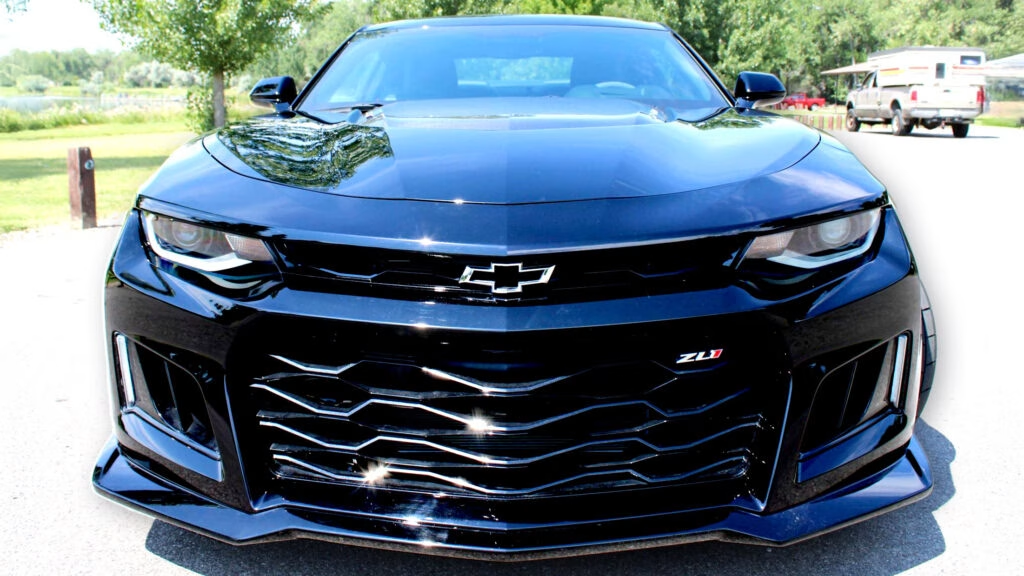Why Did a Low-Mileage 2017 Camaro ZL1 Fail to Sell at Auction?
Picture this: a 2017 Chevrolet Camaro ZL1, barely touched, with just 448 miles on the odometer. It’s the kind of car that makes enthusiasts’ hearts skip a beat—Jet Black paint, showroom-fresh vibes, and a supercharged 6.2-liter V8 pumping out a monstrous 650 horsepower and 650 lb-ft of torque. Yet, when this pristine muscle car rolled onto the auction block, it failed to meet its reserve, even after a $58,000 bid. So, what gives? Why would such a rare find struggle to find a new home?
Is a Pristine, Low-Mileage ZL1 Really Worth Nearly New Money?
Let’s get real: the original MSRP for a 2017 Camaro ZL1 hovered around $63,000, and with options, some stickered closer to $69,000. Fast-forward eight years, and someone was willing to pay almost as much as new for a car that’s barely left the garage. That’s a testament to the ZL1’s appeal, but it also raises a tough question—should buyers pay top dollar for a used car, even if it’s practically untouched?
Market data from Hagerty and Kelley Blue Book shows that collector-grade, low-mileage muscle cars can command a premium, but only if there’s genuine scarcity or a cult following. The ZL1 is special, but it’s not a limited-run unicorn like a COPO Camaro or a Shelby GT350R. Production numbers were healthy, and there’s no shortage of well-kept examples floating around. In fact, Cars & Bids and Bring a Trailer have seen several ZL1s with under 5,000 miles sell in the $50,000–$60,000 range over the past year. The upshot? While rarity helps, it’s not always enough to justify near-MSRP prices for an eight-year-old car.
How Does the ZL1 Stack Up Against Newer Muscle Cars?
The ZL1’s performance is still jaw-dropping. That supercharged V8, paired with a 10-speed automatic, delivers a 0–60 mph sprint in about 3.5 seconds and a top speed north of 190 mph. But the muscle car world moves fast. Just a couple of years after the ZL1 debuted, Ford dropped the Mustang Shelby GT500 with 760 horsepower, shifting the performance spotlight.
And then there’s the elephant in the room: the Corvette Stingray. For around $60,000, you could drive off in a brand-new C8 Corvette, complete with a mid-engine layout, modern tech, and a full factory warranty. It’s a tough choice—nostalgic muscle versus cutting-edge sports car. For some, the ZL1’s old-school charm and brute force are irresistible. For others, the allure of the latest and greatest is hard to ignore.
What Should Buyers Consider Before Bidding on a Collector-Grade Camaro?
If you’re eyeing a car like this ZL1, it pays to think beyond the odometer. Sure, ultra-low mileage is tempting, but cars that sit for years can develop issues—dry seals, flat-spotted tires, and stale fluids, just to name a few. A pre-purchase inspection is a must, even if the Carfax is squeaky clean.
There’s also the investment angle. While some muscle cars appreciate, most don’t skyrocket unless they’re truly rare or have historical significance. According to a 2023 report from J.D. Power, most modern performance cars lose value steadily over their first decade, with only outliers bucking the trend. Betting on appreciation is a gamble; buying for enjoyment is a safer play.
Why Didn’t the Seller Take the $58,000 Offer?
This is where emotion meets economics. The seller may have hoped for a bidding war, banking on the car’s condition and mileage to fetch a record price. But the market is the market—buyers are savvy, and they know what similar cars are selling for. Sometimes, holding out for that perfect offer means missing out altogether.
The big takeaway? Chasing the perfect deal on a collector car isn’t about perfection—it’s about smarter adjustments. Start with one change this week—maybe it’s adjusting your expectations, or maybe it’s getting that inspection done—and you’ll likely spot the difference by month’s end.

